Curd For Face: What It Does For Your Skin And How To Use It
As an exfoliator or a hydrator, learn how to apply this dairy product for skin nourishment!

Image: Midjourney/ StyleCraze Design Team
Using fermented ingredients and probiotics for skin has garnered a lot of fan following, thanks to K-beauty. However, this practice is not new. Most of us use curd face packs whenever we feel our skin is screaming for attention! This practice is widely followed in Asian countries. Curd benefits the skin in various ways. It is not only packed with good bacteria, fatty acids, and lactic acid but also instantly soothes red, irritated, and sunburned skin. Scroll down to understand curd benefits for skin and check out easy-to-make curd face pack recipes.
In This Article
Benefits Of Applying Curd On Your Face
Curd is one of the most common skincare ingredients used by women. It is readily available, feels incredibly soothing on the skin, and helps to improve skin quality.
A study evaluated the use of fermented dairy products (like yogurt) on the skin and found that oral, as well as a topical application, of these products, may improve skin health (1). However, further studies are required to assess their efficacy.
In another study, researchers evaluated the efficacy of a yogurt face mask or yogurt face pack on human skin. They found that the face pack decreased the levels of transepidermal water loss in treated areas and improved moisture level, brightness, and elasticity of the skin (2).
As yogurt is similar to curd, curd may exhibit the same effects.
Apart from that, curd has a number of benefits, such as:
- Helps To Exfoliate Your Skin: Curd, like any other milk product, contains lactic acid, which may help exfoliate dead skin cells and keep the skin smooth.
- Nourishes Your Skin: The essential fats, proteins, vitamins, and minerals in curd help nourish your skin and keep it healthy.
- Brightens Your Skin: The lactic acid in curd helps exfoliate the skin and improves skin complexion.
- Reduces Acne: The natural skin exfoliating and antibacterial properties of curd may help unclog pores and act against acne-causing bacteria.
- Maintains Skin Health: Curd keeps skin issues at bay by maintaining its elasticity and improving brightness.
- Keeps Your Skin Hydrated: The rich fat content in curd can help seal moisture into your skin, providing skin hydration for a long time. It may also help tackle a bad tan, dullness, and pigmentation.
- Soothes Your Skin: Curd has a cooling effect on your skin. Its anti-inflammatory properties can relieve inflammation and acne and keep your acne-prone skin comfortable.
Zakera Bagban, a beauty and lifestyle vlogger, documented the day-to-day progress of using curd on her skin every day for seven days. On the fourth day, after rinsing away the curd mask she says, “I don’t see major drastic changes in my skin, but there are a little bit of changes, like there is a lot of hydration on my face. It’s like I’ve already applied a moisturizer and I don’t need a moisturizer; it feels that way (i).”
All of these properties make curd an excellent skincare ingredient. Here’s how you can use it.
Key Takeaways
- Curd is believed to have the same effects as yogurt on the skin.
- Curd helps exfoliate, nourish, maintain, hydrate, and soothe the skin.
- Combining curd with certain natural ingredients helps with specific skin concerns, such as honey for moisturizing, turmeric for glow, and potato for de-tanning.
- Leave the face pack on for 10-15 minutes after application and wash it later with lukewarm water.
11 Curd Face Packs For Different Skin Types
1. Curd And Honey Face Pack

Directions: This face pack is suitable for normal to dry skin types. Mix 2 tablespoons of curd with a tablespoon of honey. Apply this mixture to your face and leave it on for about 20 minutes. Wash the mixture off with cold water later.
How It May Help: Honey has moisturizing and therapeutic properties (3). Together, with curd, it makes for an excellent moisturizing combo for improving skin elasticity.
2. Curd And Besan (Gram Flour) Face Pack
Directions:
This face pack is perfect for normal to oily skin types. Mix a tablespoon of gram flour or besan with 2 tablespoons of curd. Combine the curd and besan until you get a smooth and consistent mixture and apply this mixture to your face. Wash off after it dries.
How It May Help: Besan is a common ingredient in home-made face packs and helps with skin exfoliation, cleansing, and skin brightening.
3. Curd And Turmeric Face Pack

Directions: This face pack suits all skin types. You have to mix curd with half a teaspoon of turmeric and apply this mixture to your face and leave it on for about 15 minutes before washing off.
How It May Help: Turmeric has anti-inflammatory and antibacterial properties (4). Along with clearing out your skin, this face pack also leaves your face glowing with health. Understanding the full range of benefits of turmeric face pack can help you appreciate how this simple remedy enhances your skin’s overall appearance and well-being.
4. Curd And Lemon Face Pack

Directions:This face pack helps in skin brightening as it evens out your skin tone. Normal to oily skin types can try it. You have to combine lemon juice (diluted) and curd. Apply this mixture to your face and leave it on to dry before washing.
How It May Help: Lemon juice contains citric acid (which gives it the sour taste), an AHA that may help improve epidermal thickness (5). You may use this natural AHA to improve your skin quality.
 Quick Tip
Quick Tip5. Curd And Oats Face Pack
Directions:
This face pack is perfect for those with sensitive skin. Combine curd and oats. Apply this mixture to your face and wash it off after it dries.
How It May Help: Oatmeal is an excellent exfoliating ingredient. It also has anti-inflammatory and antioxidant properties (6). When combined with curd, it makes for an excellent face pack that helps remove blackheads and pimples, giving you clear skin.
Akis Ntonos, Esthetic Dermatologist, says, “Protein, probiotics, and vitamin D are all abundant in curd. The skin ultimately receives all the necessary nutrients from these substances. The overproduction of sebum or oil in your skin, which is frequently the root of boils, acne, and pimples, is controlled by curd. Overall, the lactic acid and zinc in curd can benefit dry or acne-prone skin.”
6. Curd And Tomato Face Pack
Directions:
People with any skin type can try this face pack. Combine the curd and tomato juice in a bowl until you get a smooth and consistent mixture. Apply this mixture to your face and wash off after it dries.
How It May Help:Anecdotal evidence suggests that it can help with tan and pore minimization, which results in skin tightening.
7. Curd And Potato Face Pack

Directions: This face pack is suitable for all skin types. Combine curd and raw potato pulp and apply it on your face. Let it dry and then wash off.
How It May Help: This curd and potato face pack are said to help even out your skin tone, minimize tan, and restore the natural complexion.
8. Curd And Cucumber Face Pack
Directions:
This soothing face pack is suitable for all skin types. Combine curd with raw cucumber juice and massage on your face. Leave it to dry like facial masks and then wash it off.
How It May Help: This is an extremely hydrating face pack that helps calm and soothe your skin. It also helps remove a tan and bring out your natural skin tone, leading to skin texture improvement.
According to Akis Ntonos, Esthetic Dermatologist, “Since curd is a natural moisturizing agent, it helps by hydrating dark circles and resulting in smooth, soft skin that aids in preventing dryness. Additionally, it can reduce tan, treat acne, and promote healthy skin.”
9. Curd And Orange Peel Face Pack
Directions:
If you have oily skin or mature skin, this face pack may help you. To use this, mix curd and dried orange peel powder and massage it on your skin to experience the magic of natural skin rejuvenation. Leave it to dry and then wash off.
How It May Help: Orange peel is said to have anti-aging properties. A study shows that alcoholic extracts of Mandarin orange have antioxidant and anti-enzymatic activities and can be used in anti-aging formulations (7).
 Quick Tip
Quick Tip10. Curd And Multani Mitti Face Pack

Directions: If you have oily and sensitive skin, try this face pack. Mix equal amounts of curd and Multani mitti and apply the paste to your skin. Wash it off after it dries.
How It May Help: Multani mitti helps to remove dead skin cells from the skin and keeps it radiant (8).
11. Curd And Avocado Face Pack
Directions:
This face pack is suitable for all skin types. To use it, blend half an avocado with 2 tablespoons of curd. Apply this mixture all over your face and rinse after 15 minutes.
How It May Help: Avocado is rich in fatty acids that may help improve skin moisture and keep it glowing. It may also protect it from free radical damage, as it contains antioxidants like vitamins C and E (9).
Before using any of these face packs, there are some safe application tips you should know about. Learn about them below.
Tips For Safe Application Of Curd Face Masks
- Individuals with sensitive skin should avoid using curd as it causes skin irritation.
- Wash your hands before and after using a curd face mask to inhibit bacterial growth.
- Wear old clothing while applying the mask as curd often leaves stains on the fabric.
- Always perform a patch test before using curd face masks for the first time. This will ensure you are not allergic to any of their ingredients.
Note:
Curd can cause skin dryness and also clog pores in some people, which can lead to acne.
Have you ever wondered what exactly the difference is between curd and yogurt and what they can do for your skin? Read on to know the answer.
What Is The Difference Between Curd And Yogurt?
Curd is a generic term that refers to any coagulated milk product. It is usually prepared by curdling milk with an acidic substance like vinegar or lemon juice. On the contrary, yogurt is produced by fermenting milk with specific live bacterial cultures such as Lactobacillus bulgaricus and Streptococcus thermophilus (10).
Curd is known for its exfoliating properties and can help remove dead skin cells to leave skin feeling smoother and softer. Yogurt makes an excellent natural exfoliant and moisturizer. Its probiotic content can help maintain the skin’s natural barrier and promote healthy skin flora (11). The lactic acid in yogurt may also possibly help brighten the skin and reduce blemishes and discoloration.
Infographic: 5 Homemade Curd Face Packs You Can Try
Curd is a popular ingredient used in many Asian countries as part of their daily skincare routine. Curd contains essential vitamins and nourishing minerals that soothe inflamed skin.
We have compiled a list of 5 homemade curd face packs you can try at home. Check out the infographic below to know more! Illustration: StyleCraze Design Team

Curd is one of the most used ingredients in skin care. Curd face packs are a valuable addition to your skin care regimen as they benefit the skin in multiple ways. It can soothe the skin and improve its health and moisture levels. It also helps exfoliate and nourish the skin. For those interested in home remedies to rejuvenate the skin, You can mix curd with honey, gram flour, cucumber, orange peel, fuller earth turmeric, lemon, oats, tomatoes, and potatoes to make these face packs. Try including these face packs in your skin care regimen at least once or twice a week to reap their wonderful benefits!
Frequently Asked Questions
How frequently should I use curd face packs?
Use them twice or thrice a week.
Can I leave curd on my face overnight?
You may catch a cold if you leave it overnight. It is better to use it during the daytime.
Which is better for the face: milk or curd?
Both milk and curd contain beneficial ingredients for your skin. Milk, especially when raw, is rich in vitamins that moisturize and nourish your facial skin. Curd contains lactic acid that is a fantastic exfoliant.
How long does curd take to lighten skin?
You may notice some difference on your face in 20 to 30 minutes after using curd. However, you need to use it regularly for a few months to see more visible effects on your skin tone.
Illustration: Curd For Face: What It Does For Your Skin And How To Use It
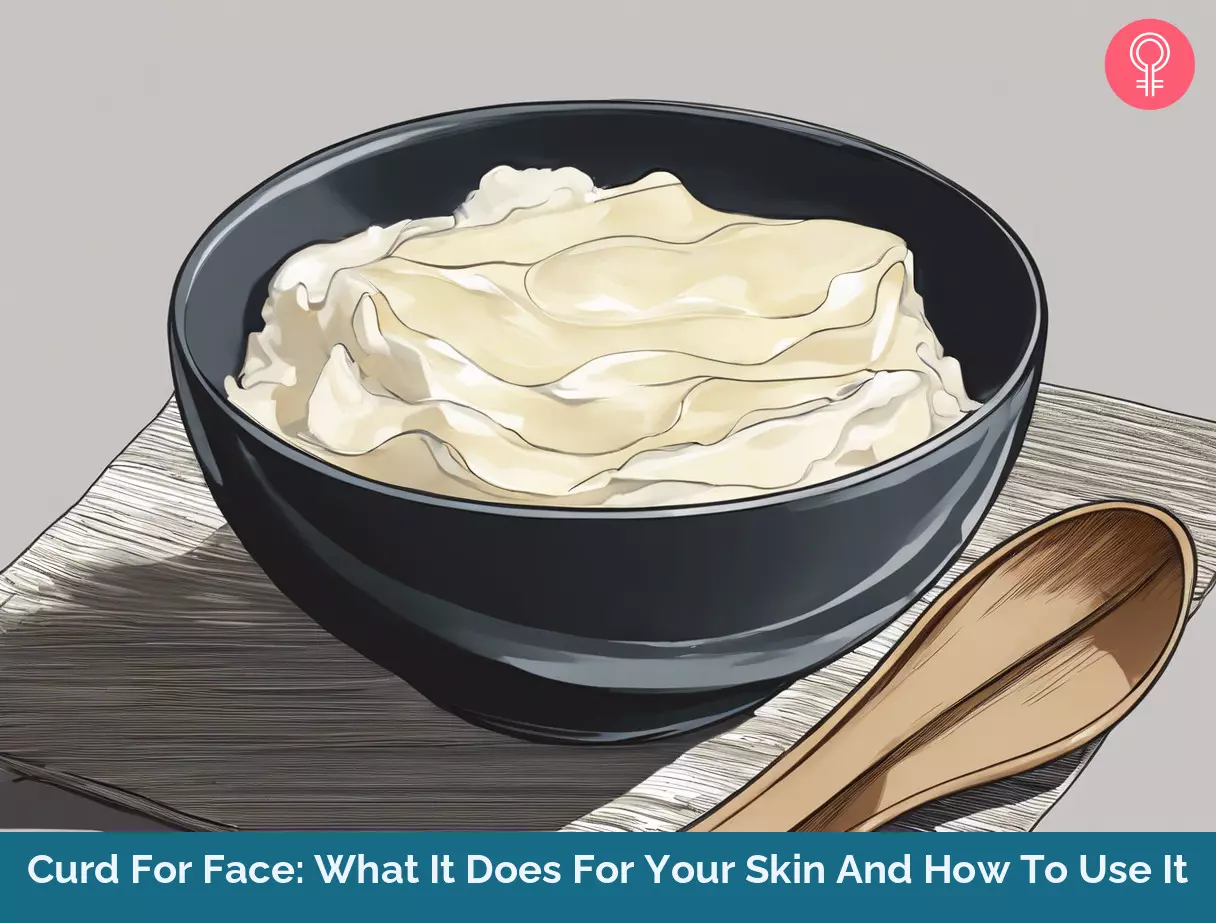
Image: Stable Diffusion/StyleCraze Design Team
References
Articles on StyleCraze are backed by verified information from peer-reviewed and academic research papers, reputed organizations, research institutions, and medical associations to ensure accuracy and relevance. Read our editorial policy to learn more.
- Effects of Fermented Dairy Products on Skin: A Systematic Review. Journal of Alternative and Complementary Medicine, US National Library of Medicine, National Institutes of Health.
https://pubmed.ncbi.nlm.nih.gov/26061422/ - Clinical efficacy of facial masks containing yoghurt and Opuntia humifusa Raf. (F-YOP). Journal of Cosmetic Sciences, US National Library of Medicine, National Institutes of Health.
https://pubmed.ncbi.nlm.nih.gov/22152494/ - Honey in dermatology and skincare: a review. Journal of Cosmetic Dermatology, US National Library of Medicine, National Institutes of Health.
https://pubmed.ncbi.nlm.nih.gov/24305429/ - Effects of Turmeric (Curcuma longa) on Skin Health: A Systematic Review of the Clinical Evidence, Phytotherapy Research, US National Library of Medicine, National Institutes of Health.
https://pubmed.ncbi.nlm.nih.gov/27213821/ - Citric acid increases viable epidermal thickness and glycosaminoglycan content of sun-damaged skin. US National Library of Medicine, National Institutes of Health.
https://pubmed.ncbi.nlm.nih.gov/9256916/ - Oatmeal in dermatology: a brief review. Indian Journal of Dermatology, Venereology, and Leprology, US National Library of Medicine, National Institutes of Health.
https://pubmed.ncbi.nlm.nih.gov/22421643/ - Evaluation of Skin Anti-aging Potential of Citrus reticulata Blanco Peel, Pharmacognosy Research, US National Library of Medicine, National Institutes of Health.
https://www.ncbi.nlm.nih.gov/pmc/articles/PMC4908842/ - In-House Preparation and Standardization of Herbal Face Pack, The Open Dermatology Journal, Bentham Open.
https://www.semanticscholar.org/paper/In-House-Preparation-and-Standardization-of-Herbal-Pal-Pal/e47d35a89c587c622323b5a7fc4e30f55d5be6df?p2df - Hass Avocado Composition and Potential Health Effects
https://www.ncbi.nlm.nih.gov/pmc/articles/PMC3664913/ - Yogurt
https://nutritionsource.hsph.harvard.edu/food-features/yogurt/ - The Role of Probiotics in Skin Health and Related Gut–Skin Axis: A Review
https://www.ncbi.nlm.nih.gov/pmc/articles/PMC10385652/#
Read full bio of Dr. Jyoti Gupta
- Akis Ntonos, FNP, is a family nurse practitioner, board certified by the American Academy of Procedural Medicine to administer injectable treatments. He is also the co-founder of Aion Aesthetics, a premier injectables clinic in New York. He has a bachelor’s degree in nursing from the Phillips School of Nursing at Mount Sinai, New York, and a master’s degree as a nurse practitioner from New York’s Pace University.
 Akis Ntonos, FNP, is a family nurse practitioner, board certified by the American Academy of Procedural Medicine to administer injectable treatments. He is also the co-founder of Aion Aesthetics, a premier injectables clinic in New York. He has a bachelor’s degree in nursing from the Phillips School of Nursing at Mount Sinai, New York, and a master’s degree as a nurse practitioner from New York’s Pace University.
Akis Ntonos, FNP, is a family nurse practitioner, board certified by the American Academy of Procedural Medicine to administer injectable treatments. He is also the co-founder of Aion Aesthetics, a premier injectables clinic in New York. He has a bachelor’s degree in nursing from the Phillips School of Nursing at Mount Sinai, New York, and a master’s degree as a nurse practitioner from New York’s Pace University.
Read full bio of Ramona Sinha
Read full bio of Anjali Sayee
Read full bio of Krati Darak







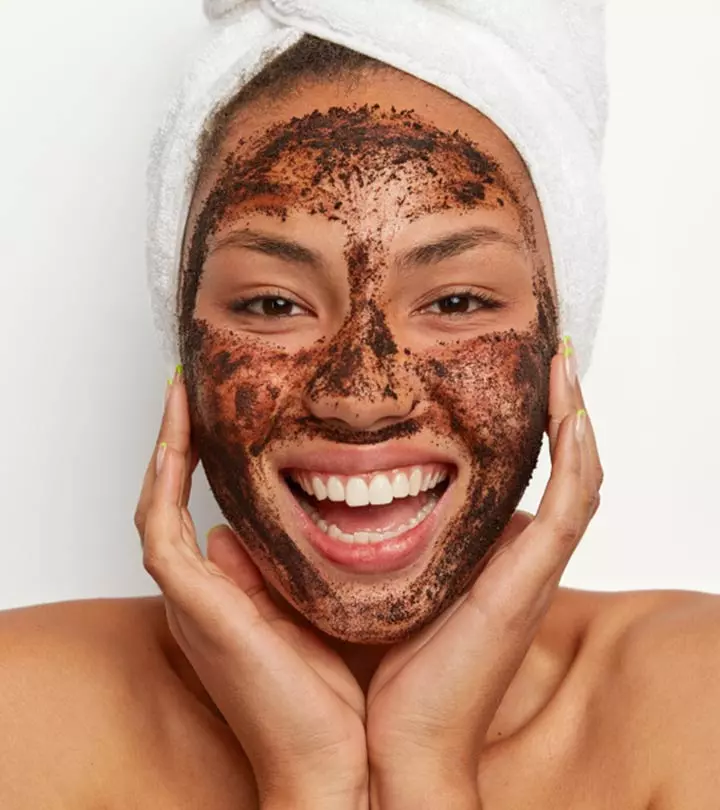




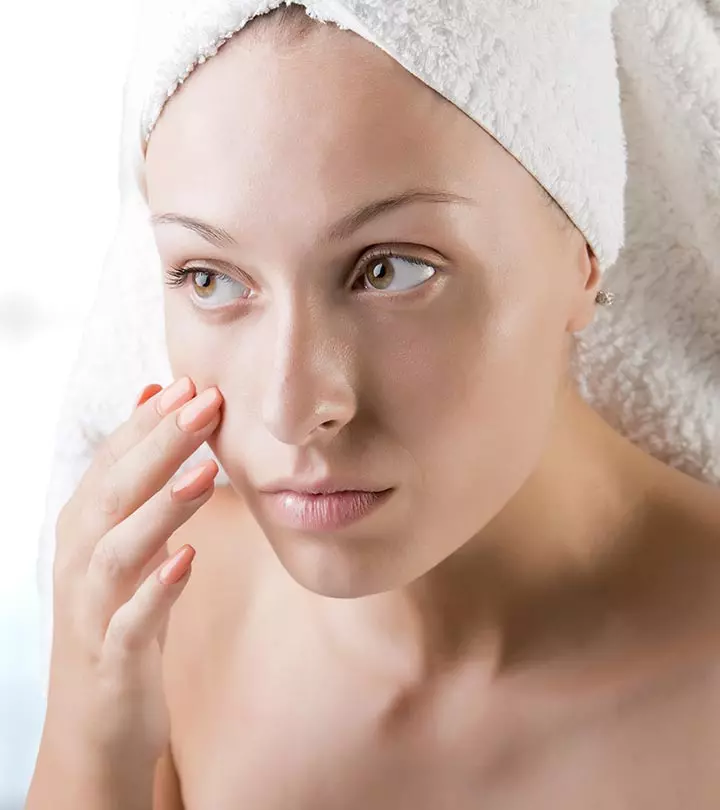



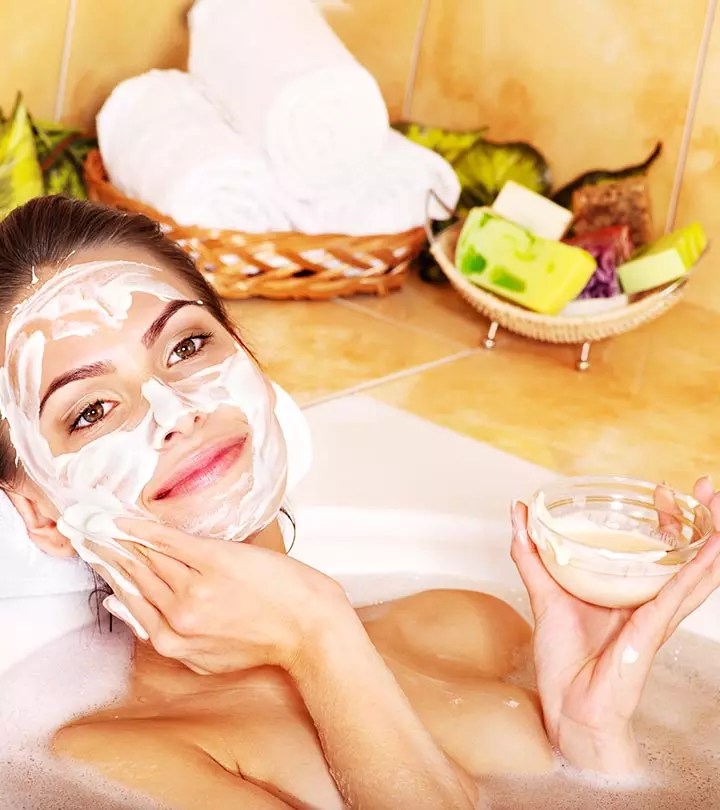
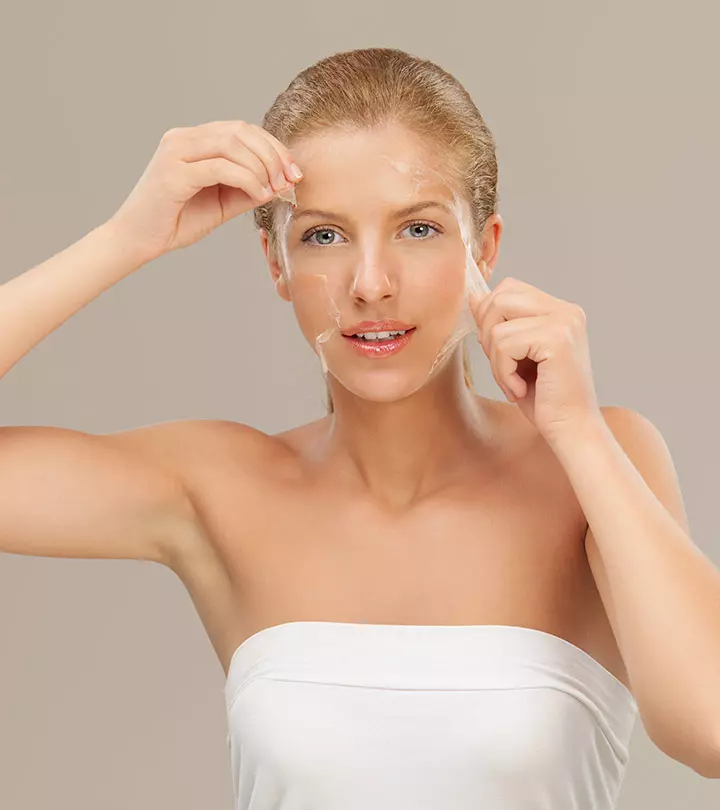

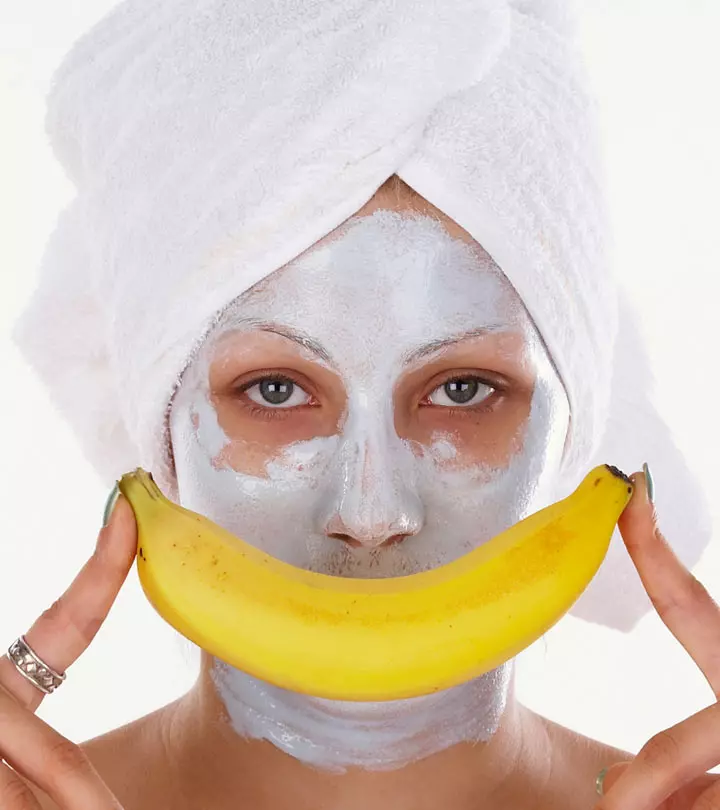







Community Experiences
Join the conversation and become a part of our empowering community! Share your stories, experiences, and insights to connect with other beauty, lifestyle, and health enthusiasts.